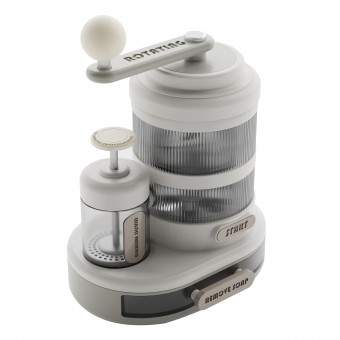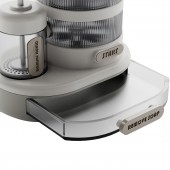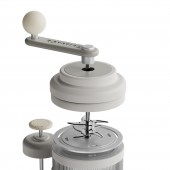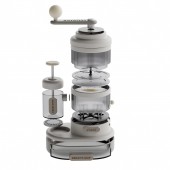DESIGN NAME:
Soapable
PRIMARY FUNCTION:
Soap Making Machine
INSPIRATION:
According to data from the WHO in 2022, only 75% of the global population uses soap and water for handwashing, while in remote rural areas of underdeveloped regions, this proportion is less than 1%. Annually, 3.5 million children under the age of 5 die from diarrheal and acute respiratory infections worldwide. By using soap for handwashing, the incidence of diarrheal diseases can be reduced by 50%, respiratory infections by 25% while also helping to mitigate the spread of infectious diseases.
UNIQUE PROPERTIES / PROJECT DESCRIPTION:
Our mini soapery aims to provide a simple, efficient, and low-cost method to enable regions in undeveloped countries with poor sanitation conditions, as well as impoverished communities, to produce soap themselves, thus reducing the occurrence of infectious diseases caused by lack of cleanliness. Therefore, we named our design "soapable", which means to enable everyone to have the access to soap.
OPERATION / FLOW / INTERACTION:
The operation of the machine is straightforward; simply place animal fat into the machine, heat and grind it to obtain melted animal fat. Subsequently, alkaline materials such as plant ash are added for the saponification process, ultimately resulting in soap suitable for washing and cleaning through curing and maturation procedures.
PROJECT DURATION AND LOCATION:
The design project initiated in December 2023 and finished in February 2024 in Xi'an, China.
|
PRODUCTION / REALIZATION TECHNOLOGY:
Product material: recycled plastic, glass and metal.
Production process: Injection molding process, easy for mass scale production.
SPECIFICATIONS / TECHNICAL PROPERTIES:
Width 290mm x Depth 210 mm x Height 400 mm
TAGS:
soap-making machine, sustainable design, Saponification reaction, Health and well-being, Hygiene and cleanliness, Humanistic care, Social design
RESEARCH ABSTRACT:
Type: Exploratory Research.
Objectives: Explore the impotency and scarcity of soap in remote areas.
Methodology: Pragmatic and social science method.
Data Collection: Data from worldwide trusted organizations.
Participants: Collaborate with underdeveloped region communities for design and testing.
Results: Feasible mini-soapery, improved hygiene, and health outcomes.
Insights and Impacts: The mini-soapery can decrease disease rates, create job opportunities, foster environmental sustainability.
CHALLENGE:
Accessibility Challenge: Develop strategies to ensure that the mini-soapery technology is easily accessible and usable by communities in remote and underdeveloped regions, considering factors such as affordability, simplicity of operation, and maintenance.
Cultural Sensitivity: Design the mini-soapery and accompanying educational materials in a culturally sensitive manner, respecting local customs, languages, and traditions to ensure acceptance and effectiveness within diverse communities.
ADDED DATE:
2024-02-16 06:56:09
TEAM MEMBERS (4) :
Liyue WU, Chen CHEN, Yin KUANG and Yong LIU
IMAGE CREDITS:
Liyue Wu, 2023.
|









